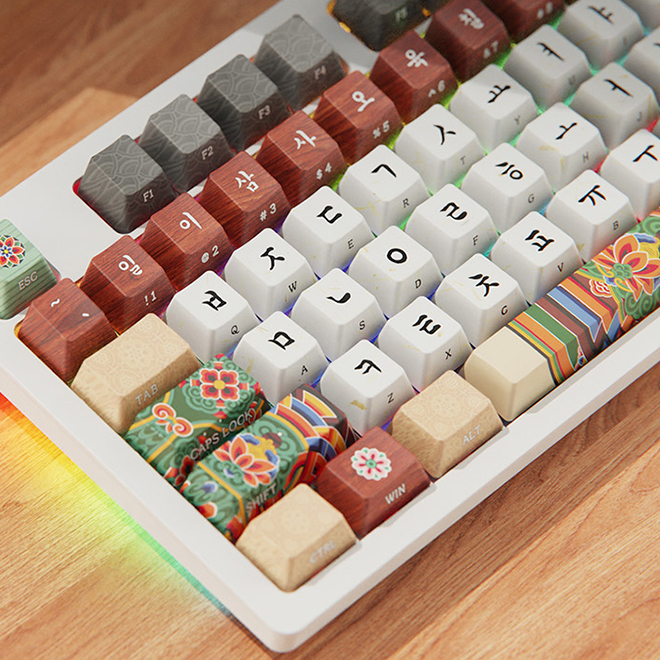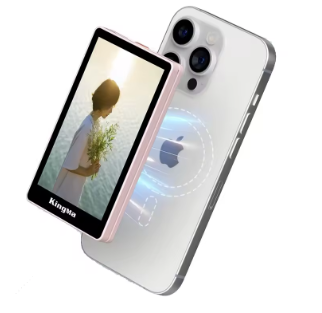Unveiling the C.E.Dot Dancheong Mechanical Keyboard: A Blend of Tradition and Tech
If you’re on the hunt for a keyboard that’s more than just a tool—something that’s a statement, a piece of art, and a nod to cultural heritage—then the C.E.Dot Dancheong Mechanical Keyboard might just steal your heart. This isn’t your average keyboard. It’s a fusion of modern technology and traditional Korean aesthetics, wrapped up in a package that’s as functional as it is beautiful. Today, I’m diving deep into this unique piece of tech, exploring its design, features, and whether it’s worth the hype (and the price tag). Let’s unbox this beauty and see what makes it tick—or rather, click.
What Makes the Dancheong Keyboard Special?
The star of the show here is undoubtedly the Dancheong keycaps. For those unfamiliar, “Dancheong” refers to the traditional Korean decorative patterns often seen on wooden architecture, like temples and palaces. These intricate, colorful designs typically feature five elemental colors—red, blue, yellow, white, and black—and symbolize harmony and beauty. C.E.Dot has taken this centuries-old art form and reimagined it for the digital age, crafting keycaps that bring a slice of Korean heritage to your desk.
The keyboard itself comes in two flavors: a wired version (based on the Abko K515) and a wireless one (built on the Abko K561). Both are mechanical keyboards, meaning you get that satisfying tactile feedback with every keystroke. But what sets this apart from the sea of RGB-laden gaming keyboards is its cultural twist. The keycaps aren’t just pretty—they’re inspired by real historical artifacts, like the Dancheong patterns from the Yangcheonsa Daeungjeon Main Beam and Gwijinsa Geukrakjeon Roof Frame, as preserved by the National Folk Museum of Korea. Even the lettering on the keys draws from the calligraphy of Cho Hee-gu, a renowned Korean calligrapher whose works are housed in the National Hangeul Museum. It’s a level of detail that screams thoughtfulness.
Unboxing the C.E.Dot Dancheong Keyboard
Opening the box feels like unwrapping a gift with a story. The packaging greets you with playful Korean phrases like, “Hello! This is a really pretty keyboard. A surprising keyboard. A design keyboard. A keyboard you’ve never met before. Wow, I’ve never seen a keyboard like this!” It’s quirky and charming, setting the tone for what’s inside. Alongside the keyboard, you’ll find a USB-C to USB-A cable, a user manual, a warranty card, a cleaning brush, a keycap puller, a switch puller, and four extra switches. It’s a thoughtful kit, especially for tinkerers who love customizing their gear.
The keyboard arrives wrapped in plastic—not for any fancy reason, but to protect those gorgeous keycaps during shipping. Once you peel it off, you’re greeted by a sleek design that balances modern minimalism with traditional flair. The wired version sports LED backlighting (available in random patterns depending on your switch choice—red or brown), while the wireless version skips the lights for a cleaner look. Speaking of wireless, the K561 model offers Bluetooth 1, 2, and 3 connectivity, plus a 2.4G dongle tucked into the back, making it a versatile option for multi-device users.
Design and Build: Where Art Meets Function
Let’s talk about those keycaps first. Made from PBT plastic and printed using a dye-sublimation process, they’re built to last—resistant to wear and fading, even with heavy use. The designs are intricate: the spacebar mimics a tiled roof, the Enter key features a vibrant Dancheong flourish, and the lettering blends Hangeul with Latin alphabets for practicality. The background texture mimics traditional Hanji (Korean handmade paper), adding a subtle tactile nod to the past. Numbers are written in Hanja (Chinese characters), like “一” (one) and “五” (five), which some might find less intuitive but undeniably unique.
The base keyboard itself is a standard 104-key layout—nothing revolutionary there. You’ve got your Ctrl, Alt, Fn, and menu keys in all the usual spots. The wireless K561 model supports N-key rollover, meaning every keypress registers, even if you mash them all at once (a boon for gamers or fast typists). It also features Step Sculpture 2, a slight ergonomic angle to reduce wrist strain during long sessions. The switches—available in red, brown, or blue—are sourced from Gshan, paired with Cherry stabilizers for smooth, wobble-free keystrokes.
But here’s the catch: while the keycaps are a premium touch, the base keyboard feels more budget-friendly. Priced at 37,900 KRW (about $28 USD) for the wired K515 and 39,800 KRW (about $30 USD) for the wireless K561, these are affordable platforms. Add the 79,800 KRW (around $60 USD) keycaps, and the complete package hovers around $90–100 USD. For that price, you get a solid but not spectacular chassis—there’s a slight flex in the middle when pressed, and the white or black plastic housing doesn’t quite match the keycaps’ luxe vibe.
Performance: Typing and Beyond
I opted for the red switches (linear, quiet, and smooth), perfect for office use where I don’t want to annoy my coworkers with clacky blue switches. The typing experience is pleasant—nothing extraordinary, but the red switches offer a light, responsive feel with just enough feedback. There’s a bit of bottom-out noise when keys hit the plate, but it’s not intrusive. The lack of significant “thock” or hollow resonance (known as “case ping”) is a plus, though don’t expect the dampened perfection of a high-end custom board.
The wireless version shines for flexibility. Pair it with up to three Bluetooth devices, use the 2.4G dongle, or plug it in via USB-C—it’s your call. Switching modes is simple with a Fn + T combo, and the connection is stable, even in a crowded Wi-Fi environment. Battery life isn’t specified, but similar Abko models last weeks on a single charge, so it’s likely reliable for daily use.
Pros, Cons, and Who It’s For
Pros:
- Stunning Dancheong keycaps that blend art and heritage.
- Versatile connectivity (wireless model).
- Affordable base price with decent performance.
- Durable PBT keycaps with high-quality dye-sub printing.
Cons:
- Base keyboard feels a bit cheap compared to the keycaps.
- Hanja numerals might not appeal to everyone.
- No water resistance or premium extras like a wooden palm rest.
This keyboard isn’t for everyone. If you’re a hardcore gamer chasing RGB overload or a typist demanding a $200+ custom build, you might find it lacking. But if you’re a design enthusiast, a fan of Korean culture, or just someone who wants a conversation starter on their desk, it’s a gem. The keycaps alone are worth it—they’d elevate even a mid-tier keyboard if you’re into DIY upgrades.
Should You Buy It?
At around 120,000 KRW ($90–100 USD) for the complete set, the C.E.Dot Dancheong Keyboard sits in an odd spot. The keycaps are the real value here—gorgeous, unique, and well-crafted. The base keyboard, while functional, doesn’t quite live up to their potential. My take? If you’re on a budget, grab the keycaps separately (79,800 KRW) and pair them with a sturdier board you already own. If you want the full package out of the box, it’s still a solid buy—just temper your expectations for the chassis.
For me, it’s less about raw performance and more about the vibes. Every time I glance at those keycaps, I’m reminded of Korea’s rich artistic legacy. It’s a sachi-jae—a luxury item in the best sense—not because it’s extravagant, but because it brings joy beyond its utility. Whether you’re typing up a storm or just admiring it between tasks, it’s a little piece of culture you can touch every day.
Where to Get It
If you’re in Korea or planning a trip, you can pick up the C.E.Dot Dancheong Keyboard by visiting the National Museum of Korea in Seoul. It’s available at their gift shop, making it a fantastic souvenir that combines practicality with cultural significance. Not only do you get a unique piece of tech, but you’re also supporting a product tied to Korea’s heritage, backed by the museum’s prestige.
Final Thoughts
The C.E.Dot Dancheong Mechanical Keyboard is a love letter to Korean tradition, delivered through the lens of modern tech. It’s not perfect, but it doesn’t have to be. It’s a celebration of design, a functional piece of art, and a reminder that even everyday tools can tell a story. Have questions about it? Drop them below—I’d love to chat more about this beauty. Until next time, happy typing!

